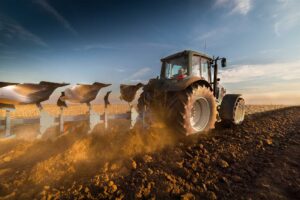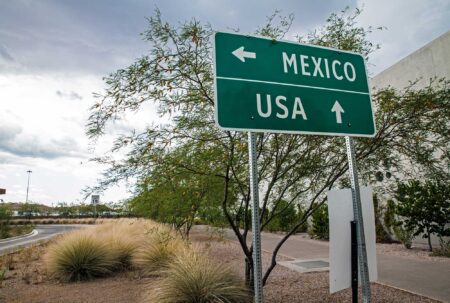Three springs ago, a despicable derecho ravaged our region. We eventually engaged a scrap iron guy to haul away some of the wreckage the storm had created at my parents’ farm. It was gratifying to think that the steel from our ruined grain bins was going to be recycled, perhaps into new grain bins.
Like many farms, ours had a quantity of dilapidated equipment — a wrecked car, an ancient Case combine, other miscellaneous junk — that had been placed into long-term storage in the shelterbelt. I told the scrap guy exactly where these items could be found, instructing him to just follow the path.
The path I spoke of was a dirt trail that wended its way through the heart of the shelterbelt. For many years, that path served as a shortcut to move our farm machinery through our grove instead of around it. Although, unlike Hansel and Gretel, our tractors never became lost in the deep, dark forest.
But it had been nearly a quarter century since the path had been traversed by a tractor. Trees had grown up, around, and through the path, and the elements had done their darnedest to erase the wheel ruts we had so assiduously crafted. It’s similar to the process wherein a jungle gradually erases all traces of a past civilization.
I was recently doing some work around the farm and decided to take a stroll through the shelterbelt to see how the scrap guy had turned out. I soon learned that he had missed the path by a country mile. Not literally, but you get the picture.
In all fairness, it was even difficult for me to find the path, and I know that shelterbelt like the lenses of my eyeglasses. Or at least I used to.
Ancient trees had fallen, and numerous new ones had sprouted up. I felt like Indiana Jones, whacking his way through an uncharted wilderness.
Like Indy, my search for treasure was rewarded. There, exactly where we had left them, sat our old Case A-6 combine and our prehistoric steel-wheel, two-row corn planter.
Time and tree falls had not been kind to the combine. But it was good to see her again, even though her orange complexion was now splotched with greenish lichens.
The corn planter has been sitting in that same spot for as long as I can remember. When we were kids, my siblings and I would take turns sitting on its cast iron seat and pretending that we were driving a car or, in my case, flying a high-performance fighter jet. Tom Cruise in his “Top Gun” movies had nothing on me when it came to aerial dogfights.
My siblings and I spent so much time out in the shelterbelt that we knew every twig, branch, and tree. It was similar to a real-life version of the children’s book “Where the Wild Things Are” except without all those weird-looking monsters. That is, if you don’t count some of my more epic zit outbreaks.
Seeing that old iron again was like unexpectedly bumping into a childhood friend.
The corn planter looks as though it could easily be put back into service. All a guy might have to do is extract it from the shelterbelt, oil it here, and grease it there, and fill its seed boxes, which have roughly the same capacity as a thimble.
Planting two 40-inch rows at a time would be excruciatingly slow by today’s standards. Modern corn planters are approximately a quarter of a mile wide, are controlled by computers and, thanks to GPS guidance systems, create laser-straight rows.
I wonder how the ancestors who left that old planter out in the trees would react if they were given a ride in the cab of a contemporary tractor/corn planter combo? What would they think about the hands-free steering, which can make it possible for the operator to watch reruns of “Green Acres” as they plant?
In its heyday, that primordial planter was powered by a team of horses. You could say, from a certain point of view, that the rig had three GPS systems: one apiece in the horses’ heads, and the one that resided in the operator’s skull.
Dad farmed with horses when he was a kid. I once asked him if it was difficult to cultivate corn with a pair of Belgians.
“Not really,” he replied. “A good team of horses would know what they were doing. You just sat on the seat and kept an eye on things.”
Sounds familiar. Although the view from a tractor cab is probably much better than the one you would get from the seat of that old planter.
Jerry’s book “Dear County Agent Guy” can be found at www.workman.com and in bookstores nationwide.


:max_bytes(150000):strip_icc()/100875326_pigs-205487d9fc054eaea6fab279218b5d6a.jpg)




:max_bytes(150000):strip_icc()/oldcornplanter-5c182ec6605e4594900baa94da7a0a9e.jpg)

:max_bytes(150000):strip_icc()/heatherlibrary-90ea3b4777294b008ffd3f817bf229d5.jpg)
:max_bytes(150000):strip_icc()/2308-01-097_pigs-b0529b97e3e943d392b7014aee9eb4f5.jpg)
:max_bytes(150000):strip_icc()/DC-5ec71dd349104ec287b318f05ebf5f74.jpg)
:max_bytes(150000):strip_icc()/SFCE_Sp25_WortheyFarmersMarket_preview1-9c3c0b2c5e9444249fa60594b7f30fec.jpg)